Calc AB: Calculator vs No-Calc — Why This Choice Matters
AP Calculus AB is a curious mix: parts of the exam explicitly require a graphing calculator, and other parts forbid it. That rule creates a strategic tension for students. Do you lean on the calculator as a crutch whenever possible, or do you train to be ruthless with algebra and intuition so you never feel lost in the no-calculator sections? The smart answer is both — but with careful planning.
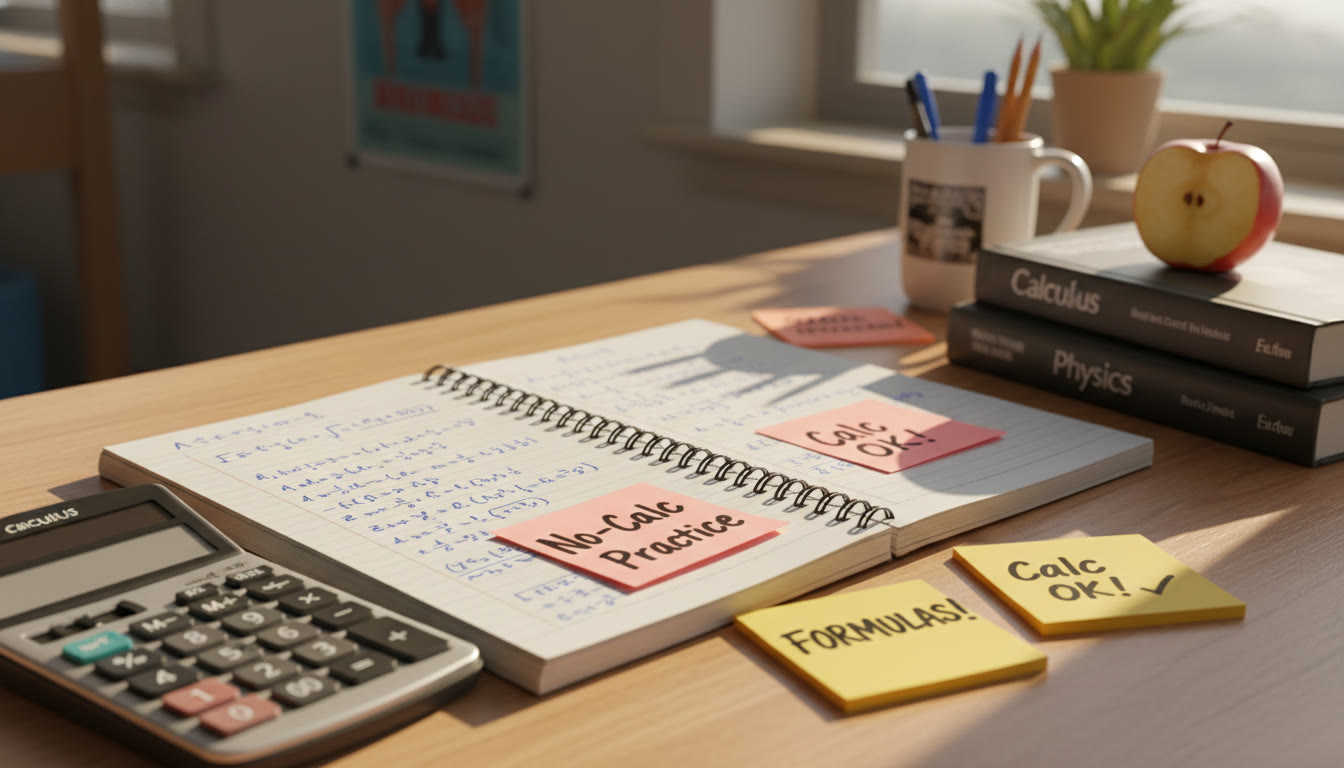
How the Exam Uses Calculators (Quick Reality Check)
Before we dive into strategy, here’s the practical layout you must internalize. The Calculus AB exam divides into multiple-choice and free-response sections, and each of those has calculator and no-calculator parts. That means comfortable calculator use is a necessary skill, but so is the ability to produce clean, exact work without one.
What this means for you
- You must master both numerical/graphical thinking (to use a graphing calculator or the built-in Desmos in the testing app) and classical algebraic methods.
- Some problems are faster and less error-prone with a calculator; others are designed to test conceptual understanding and neat symbolic manipulation.
- Time management and the ability to choose which problems you solve with a calculator mindset are critical on exam day.
Mindset: Calculator as Tool, Not Crutch
Think of the graphing calculator as an extension of your brain — like a lab instrument. It reveals numerical patterns, helps you visualize, and checks work. But if you rely on it for routine algebra or ignore the underlying concepts, you’ll be slowed down or trapped when the exam forbids it. The goal is deliberate fluency in both modes.
Three mental habits to build
- Predict then check: Before you graph or compute, predict qualitatively what you expect (e.g., increasing/decreasing behavior, concavity, intercepts). This habit exposes calculator errors and aligns your intuition.
- Translate answers: Be able to convert a numerical result to exact symbolic form when appropriate (and vice versa).
- Fast estimation: Get comfortable with mental or paper-based estimates to vet calculator output quickly.
Specific Strategies for Multiple Choice (Section I)
Multiple choice is half the score and split into Part A (no calculator) and Part B (calculator required). Your tactical approach should differ across parts.
Part A — No Calculator (30 questions, 60 minutes)
- Train to move quickly with algebraic simplification and symbolic reasoning.
- Memorize key derivative and integral forms, common identities, and quick limit behaviors.
- Use approximation and bounding: sometimes you can eliminate three answer choices by thinking about sign, monotonicity, or magnitude.
- Practice timed sets of similar questions so you learn how long an average no-calculator question should take (rough target: 2 minutes per question, with time for review).
Part B — Calculator Required (15 questions, 45 minutes)
- Use the calculator strategically: graph first to get a feel, then algebraically refine if required.
- Familiarize yourself with the built-in Desmos tools (if testing digitally) and any handheld calculator features you’ll use for roots, derivatives, and integrals.
- Don’t waste time fiddling with windows: learn quick window-setting heuristics and how to use trace, roots, and intersection commands efficiently.
Specific Strategies for Free Response (Section II)
Section II is a mix: Part A allows a calculator (2 questions, 30 minutes total) while Part B forbids it (4 questions, 60 minutes total). Free response rewards clear work, reasoning, and justification — calculators can help but cannot replace structured mathematical writing.
Calculator Allowed (Part A)
- Reserve calculator work for numerical tasks that are tedious or error-prone by hand: numeric integration approximations, solving transcendental equations, or graphing complex functions to locate features.
- Even with a calculator, show work. Write equations, state assumptions, and annotate calculator outputs with interpretation (e.g., “Using calculator, root ≈ 1.732”).
No Calculator (Part B)
- Focus on exact answers when possible (symbolic antiderivatives, definite integrals that simplify, exact trig values).
- Structure your solutions clearly: state the method, perform algebraic steps, and write final answers with correct units and notation.
When to Use the Calculator — A Practical Decision Tree
Not every calculator-allowed question needs a calculator. Use this quick decision tree during practice and on test day:
- Is the expression straightforward to manipulate symbolically? If yes, try algebra first.
- Does the question ask for a numeric approximation or require solving a transcendental equation? Use the calculator.
- Will graphing the function clarify multiple-choice traps (e.g., comparing behaviors of functions)? Graph it.
- If you’re running out of time, consider a calculator-assisted approach to secure partial credit or a plausible numeric result that you can justify.
Practice Plan: Building Dual Fluency (8-Week Example)
Here is a sample eight-week plan that balances calculator and no-calculator practice. Adapt the timeline to your test date and weekly availability.
| Week | Focus | Calculator Emphasis | Practice Tasks |
|---|---|---|---|
| 1 | Foundations: limits and derivatives | Low | No-calculator daily warmups; 2 calculator sessions learning graphing basics |
| 2 | Derivatives in context and curve analysis | Medium | Mixed MC sets; practice predicting behavior before graphing |
| 3 | Integrals and fundamental theorem | Low | Exact antiderivative drills; no-calculator FRQs |
| 4 | Numerical integration and Riemann sums | High | Calculator tasks on approximations; Desmos visual checks |
| 5 | Practice exams and timing | Mixed | Timed Part A/B alternation; simulate test conditions |
| 6 | Weakness attack | Targeted | One-on-one reviews for tricky topics; Sparkl’s personalized tutoring can help focus sessions |
| 7 | Full-length practice tests | Full | Two full exam simulations with spaced review |
| 8 | Polish and confidence | Balanced | Light drills, recovery, strategy review, mental preparation |
Why this alternation works
Alternating emphasis prevents overdependence on the calculator while keeping your graphing skills sharp. In week 6, targeted help — such as short, personalized tutoring sessions — can iron out persistent confusions. If you’re using a service like Sparkl, their tailored study plans and 1-on-1 guidance can accelerate this phase by diagnosing specific weak spots and giving practice that reflects your exact needs.
Calculator Mastery: What Features Matter Most
Not all calculator models are created equal for AP Calculus; however, the exam focuses on basic graphing, root-finding, and numerical calculus features rather than exotic CAS (computer algebra system) functions. Here’s what you should be fluent with:
- Graphing window basics and quick window heuristics (how to set Xmin, Xmax, Ymin, Ymax quickly).
- Trace, root, and intersection functions.
- Numeric derivative and integral commands and their limitations.
- Using tables to inspect function behavior and create approximations.
Practice drills to build speed
- Set up 10-minute sessions where you solve 3 graphing tasks under time pressure to mimic Part B timing.
- Do blind-check drills: solve algebraically first, then use the calculator to confirm.
- Keep a short reference sheet of keystroke sequences for your calculator (or the Desmos workflow) and rehearse it until muscle memory kicks in.
No-Calc Excellence: Tricks That Save Time
No-calculator problems often reward clean approaches and conceptual insight. Here are ways to shave minutes and avoid algebraic tangles.
Handy techniques
- Factor and cancel aggressively. Many no-calc problems simplify dramatically once you factor common terms.
- Use exact trig values (e.g., sin 30°, cos 45°) and know the unit circle like the back of your hand.
- Master the small-angle and limit approximations for quick estimation (e.g., sin x ≈ x near 0).
- Keep derivatives and antiderivatives of common families memorized (polynomials, basic trig, exponential, natural log) so you don’t have to re-derive them under pressure.
Example Walkthroughs: A Calculator vs No-Calc Pair
Spend time with paired problems: solve one without a calculator and one with. Here are two short examples that demonstrate mindset more than computation.
Example 1 — Concept First (No-Calc)
Question idea: Given f(x) = x^3 − 3x + 2, determine intervals where f is increasing or decreasing and find local extrema.
Approach: Compute f'(x) = 3x^2 − 3 = 3(x^2 − 1). Set f'(x) = 0 to get x = −1, 1. Sign chart: for x < −1, f’ positive; between −1 and 1, f’ negative; x > 1, f’ positive. So local maximum at x = −1, local minimum at x = 1. No calculator needed — purely symbolic reasoning and a sign analysis.
Example 2 — Calculator-Assisted (Calculator Allowed)
Question idea: Approximate the area under g(x) = e^{−x^2} from x = 0 to x = 1.
Approach: e^{−x^2} has no elementary antiderivative. Use numerical integration on your calculator (numeric integral command) or Desmos. But before you compute, estimate: values are between 1 and e^{−1} ≈ 0.3679, so area < 1 and > 0.3679. Then compute numeric integral to 3 decimal places. On the free-response part where calculator is allowed, show your numeric result and a short justification that this integral cannot be expressed in elementary closed form.
Time Management: How to Allocate Your Minutes
Time pressure is the silent enemy. A well-rehearsed time allocation keeps panic at bay and ensures you pick your battles wisely.
| Section | Minutes | Strategy |
|---|---|---|
| MC Part A (No Calculator) | 60 | Quick passes: answer easiest 70% first, flag others for second pass. |
| MC Part B (Calculator) | 45 | Use calculator to confirm graphically when unsure; don’t over-graph every problem. |
| FR Part A (Calculator) | 30 | Allocate 15 minutes per question; use calculator for numeric heavy work. |
| FR Part B (No Calculator) | 60 | 15 minutes per question target; show step-by-step reasoning for partial credit. |
Common Mistakes and How to Avoid Them
- Over-graphing: Students sometimes graph immediately rather than thinking conceptually. Pause for 5–10 seconds and predict behavior.
- Windowing errors: Picking a bad viewing window can hide important features. Learn default heuristics like centering around key intercepts or critical points.
- Rounding too early: Don’t round intermediate values; keep full precision when possible and round only the final answer.
- Notation sloppiness: In free response, messy notation can cost points even when the idea is correct. Practice neat, labeled steps.
How Personalized Tutoring Can Help (Without Overdoing It)
There’s no substitute for targeted practice. Personalized tutoring can identify whether your weakness is conceptual (e.g., misunderstanding the fundamental theorem) or procedural (e.g., inefficient calculator keystrokes). If you work with a tutor who provides tailored study plans, weekly progress checks, and short, focused drills — like Sparkl’s personalized tutoring offerings — you can accelerate improvement on both calculator and no-calculator fronts. The best tutors balance building raw skills with exam-specific tactics: timing strategies, keystroke fluency, and proof-style clarity for free response.
Exam-Day Checklist: Calculator Edition
- Know whether you’ll use Bluebook Desmos or a handheld calculator and rehearse on that exact platform.
- Bring two approved calculators (if using handhelds) and fresh batteries — don’t risk a single point of failure.
- Pack a small reference card with quick keystroke reminders for your calculator functions (practice them until they’re automatic).
- During the exam, when faced with an unfamiliar problem, state your approach before computing. This habit helps you earn partial credit and keeps you mentally organized.
Last-Minute Drills (48–72 Hours Before the Exam)
In the last two to three days, focus on clarity and confidence rather than learning new heavy techniques. Here are high-leverage activities:
- Do two mixed timed sections (one MC block and one FR block) under strict timing.
- Perform keystroke-only drills for calculator tasks you’ll use: numeric derivative, integral, root finding.
- Complete three no-calculator FRQs and practice writing concise, justified steps. Focus on precision.
- Rest well. Cognitive sharpness trumps extra cramming at that point.

Wrap-Up: Balanced Mastery Wins
AP Calculus AB rewards students who can think both numerically and symbolically. The calculator is a powerful ally when used with judgment, and the no-calculator portion is a deliberate test of your conceptual and algebraic fluency. Build both skill sets in parallel: drill no-calculator algebra until it’s crisp, and practice targeted calculator functions until they’re reflexive. Use timed practice, paired problem sets, and targeted tutoring when needed to smooth the rough edges.
And remember: strategy wins on test day. Predict before you compute, favor exact answers when possible, and treat the calculator as a tool for exploration and verification rather than a first resort. If you’re feeling stuck, a short sequence of personalized tutoring sessions that focus on your weak spots — translating calculator outputs into exact reasoning or cleaning up symbolic work — can push your score higher more efficiently than an extra week of unfocused review. Sparkl’s model of 1-on-1 guidance, tailored study plans, and AI-driven insights can be particularly helpful for students who want efficient, measurable improvement without burning out.
Final Tip
On exam day, breathe. Use your practiced routine: warm up for five minutes, scan the first section to boost confidence, and attack questions with a calm decision tree: predict, decide calculator or no-calculator, execute, and check. You’ll be amazed at how well a steady, practiced strategy performs under pressure.
Good luck — and enjoy the satisfying moment when an idea clicks on a no-calculator problem because you trained both brain and tool to work together.






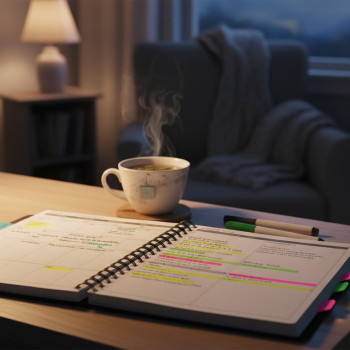

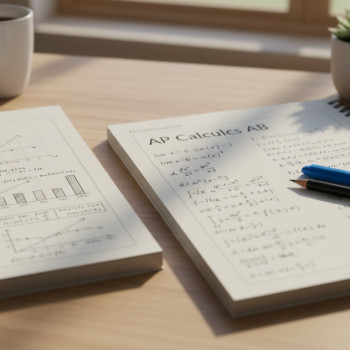
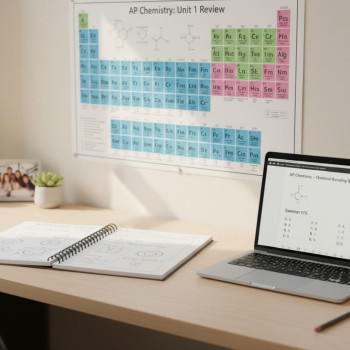
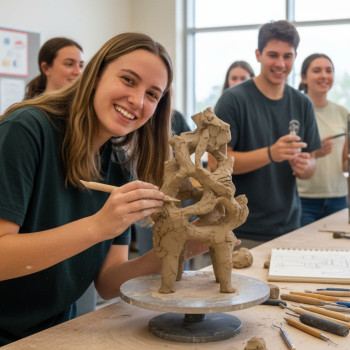









No Comments
Leave a comment Cancel